The designation will widen Singapore’s design network, promote collaboration, facilitate knowledge exchange and foster relationships with fellow creative cities. Stephanie Peh reports.

December 31st, 2015
Top image: View of the Esplanade. Photography: JoCelest
To round off the 2015 jubilee celebrations, it was announced in December that Singapore had been designated a UNESCO Creative City of Design. One of the first two ASEAN cities to be appointed – alongside Bandung, Indonesia – Singapore will be part of an existing network of 116 members in the UCCN.
The UNESCO Creative City Network (UCCN) was incepted in 2004 to foster international collaboration amongst member cities and to enhance global creativity across seven fields of crafts and folk arts, design, film, gastronomy, literature, media arts and music. Singapore’s application, submitted in July 2015, was led by the DesignSingapore Council, with support from the government, design associations and institutions.
DesignSingapore Council Executive Director, Jeffrey Ho, tells us what this designation means for the design community and what to expect in the years to come.
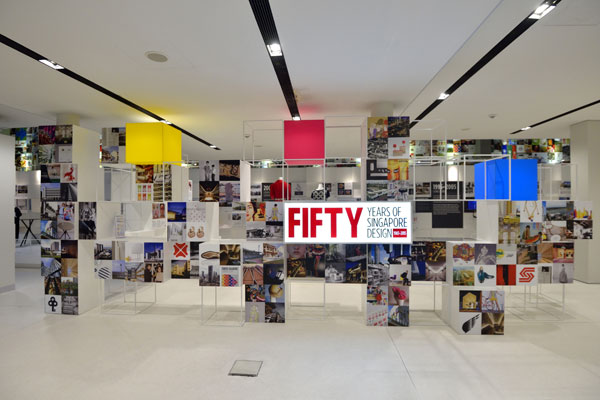
Fifty Years of Singapore Design. Image courtesy of DESIGNSINGAPORE COUNCIL
What does Singapore’s appointment as part of the UCCN mean for the design community here?
First, we have to understand what is the UNESCO Creative City Network. Basically, its aim is to foster international collaboration and cooperation amongst cities that have identified creativity as a strategic development for viable development. The creative cities network spans various categories, ranging from design to gastronomy, and Singapore has been designated as a UNESCO Creative City for the Design category.
The designation means that as a city of design, we are looking at harnessing design and creativity to develop, promote and help the social and economic development of the city, using it [design and creativity] strategically in different ways.
In layman terms, how do you begin to nurture the design culture, industry and designers? The second part is to help businesses tap on design for business growth. At the same time, their products might be better designed and used for better living. The third thing is design for public life, such as government processes and public services, and even enabling citizens to use design to better their lives.
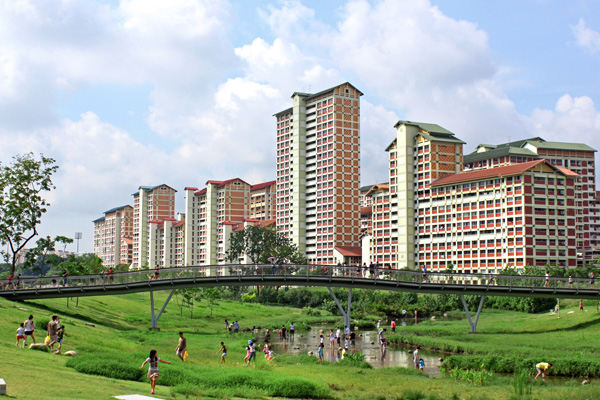
Bishan – Ang Mo Kio Park by Atelier Dreiseitl. Image courtesy of DESIGNSINGAPORE COUNCIL
Being a part of this network also means that we will need to collaborate with fellow cities of design. This is very exciting because there are many cities [involved], from Europe to Asia and America. Collaboration is very powerful because design can cut across national boundaries and look at global issues. We can learn from each other and understand the different things that they [member cities] do with design that are successful, and we can collaborate on these programmes.
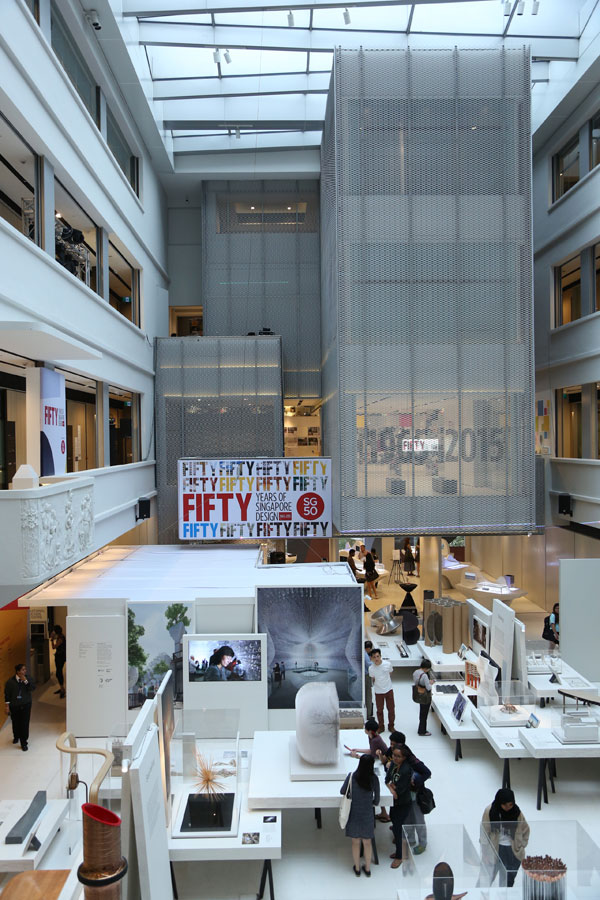
Thomas Heatherwick’s exhibition at the National Design Centre in 2015. Image courtesy of DesignSingapore Council
The second layer of collaboration is even more exciting. The first layer is that we already know these cities and have contacts and collaborations. Second thing is now as a network, how do we work closer together to make the whole network more powerful in the promotion and nurturing of design globally?
How are opportunities for international collaboration created?
It comes in many different forms. In four years, a city of design will have to host the UNESCO Creative City Conference to bring members cities together. The exchange of knowledge is one thing.
The other thing is you work with various member cities and learn from each other. For example, we will say, ‘In Singapore, we are doing design for public services and this is the success that we have had.’ This is how we reach out to other people and share with the other cities. The other cities may say, ‘Yes, this is something good, but we also did this for something else, for social innovation.’ From there, we can begin to share our knowledge with the rest of the cities who can learn from us, and vice versa.
For example, Shenzhen organised a competition for young and emerging designers who are only from the UCCN. We can also have the other member cities come and participate during our Singapore Design Week.
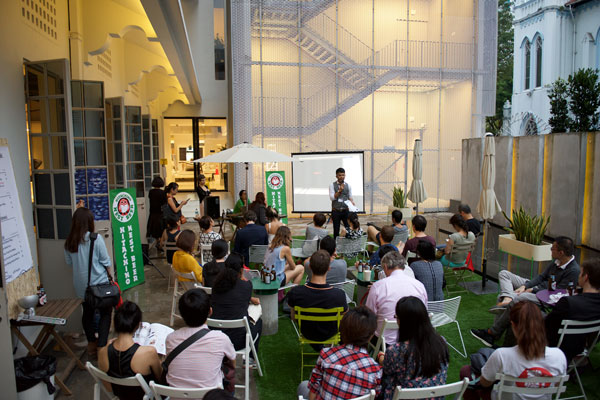
Pecha Kucha Night at the National Design Centre courtyard during Singapore Design Week 2015. Image courtesy of DesignSingapore Council
What happens at the UCCN Conference?
It’s a very good question because we would also need to learn what happens. Generally, when you host it, you invite the various cities to come to Singapore, and they will present what they have done for the year. Same thing, knowledge sharing and networking sessions – their designers might be in Singapore, and we will showcase our designers.
We will hopefully do the conference during Singapore Design Week so that it will be 14 days of festivities that the rest of the visiting cities can participate in.
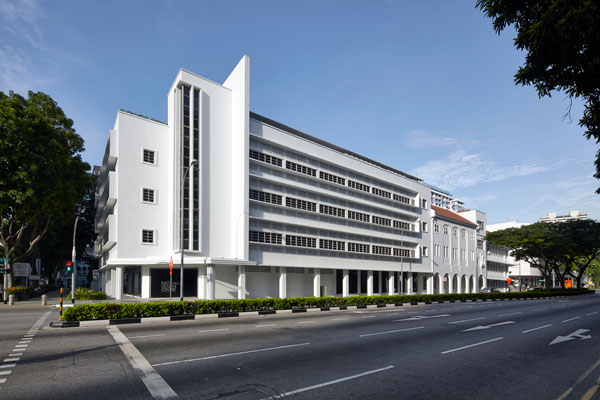
National Design Centre (exterior). Photography: Aaron Pocock
How did we make the cut as a UCCN?
There are various criteria such as, how does a city use design for social and economic development? How is design developed from the point of nurturing the design and creative community, collaboration between designers and businesses, or designers within the social and public sector?
In Singapore, we have had a DesignSingapore Council for ten years now. Our track record is good. We have been promoting Singaporean design, growing the design sector, all the way to enabling Small and Medium-sized Enterprises (SMEs) to use design. We have a Design Thinking & Innovation Academy (DTIA) that teaches people inside SMEs and public services to use design thinking in their work, products and services. We also have a Asian Insights and Design Innovation (AIDI) to understand users through design thinking to make life better.
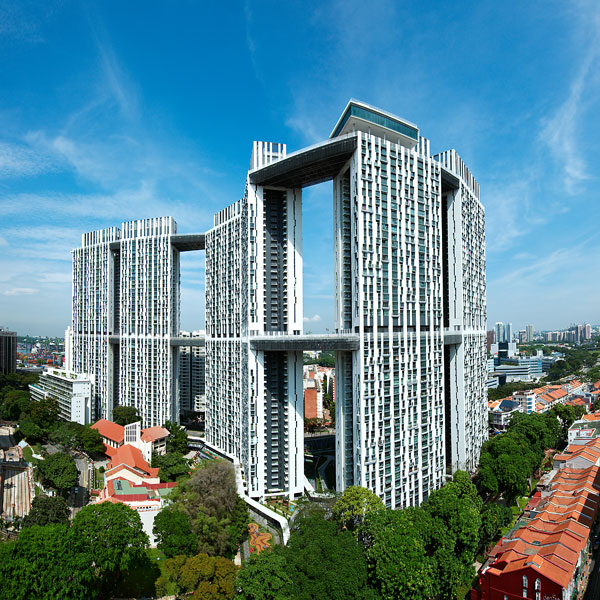
The Pinnacle@Duxton by ARC Studio Architecture + Urbanism and RSP Architects. Image courtesy of DesignSingapore Council
All in all, our infrastructure is beautiful. Architecture is wonderful. Urban planning is great. We use design for public services, such as improving the services of the Ministry of Manpower (MOM) through design thinking. Our hospitals also use design thinking and we work with them closely.
When you put all of that together, we have a pretty good track record of meeting the criteria that a city of design needs. That is why we have been designated.
What are the objectives to fulfill?
They would like to see that you have certain programmes every year that work towards using design for social and economic development. Your collaborations with public services and associations, private sectors… these are all the items that they are interested to see, as well as design for public good.
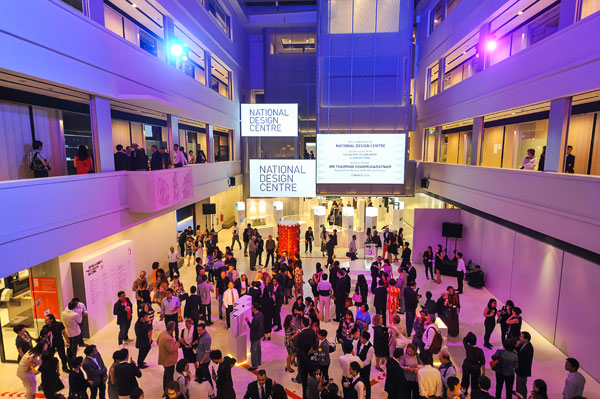
Official Opening of the National Design Centre in 2014. Image courtesy of DesignSingapore Council
What will the DesignSingapore Council work towards in 2016?
For 2016, we are working towards more programmes. Our public sector transformation programme has been quite useful, and we will be using the programme to help develop and better public services.
We are also drafting our next ten-year design master plan, of what we want to do with design for Singapore. This will be announced in March.
UNESCO Creative City Network
en.unesco.org/creative-cities
DesignCouncil Singapore
designsingapore.org
A searchable and comprehensive guide for specifying leading products and their suppliers
Keep up to date with the latest and greatest from our industry BFF's!

Channelling the enchanting ambience of the Caffè Greco in Rome, Budapest’s historic Gerbeaud, and Grossi Florentino in Melbourne, Ross Didier’s new collection evokes the designer’s affinity for café experience, while delivering refined seating for contemporary hospitality interiors.

The Sub-Zero Wolf showrooms in Sydney and Melbourne provide a creative experience unlike any other. Now showcasing all-new product ranges, the showrooms present a unique perspective on the future of kitchens, homes and lifestyles.

Marylou Cafaro’s first trendjournal sparked a powerful, decades-long movement in joinery designs and finishes which eventually saw Australian design develop its independence and characteristic style. Now, polytec offers all-new insights into the future of Australian design.

To be housed in the 1460 armoury building Sale d’Armi in Arsenale, Venice, this year’s Singapore Pavilion responds to the 18th International Architecture Exhibition’s theme — The Laboratory of The Future — but taking the form of a giant evolving machine that seeks to understand our true desires for how we live in the city.

Waste not want not! These bold and innovative creators are designing objects and fashion using waste as their starting point.
The internet never sleeps! Here's the stuff you might have missed

Focusing on facade and green design, this pair of office blocks is designed to meet the most contemporary demands of workplace design.

Adaptive reuse is all the rage across the design industry, and rightly so. Here, we present a selection of articles on this most effective approach to sustainability.

In the pursuit of an uplifting synergy between the inner world and the surrounding environment, internationally acclaimed Interior Architect and Designer Lorena Gaxiola transform the vibration of the auspicious number ‘8’ into mesmerising artistry alongside the Feltex design team, brought to you by GH Commercial.